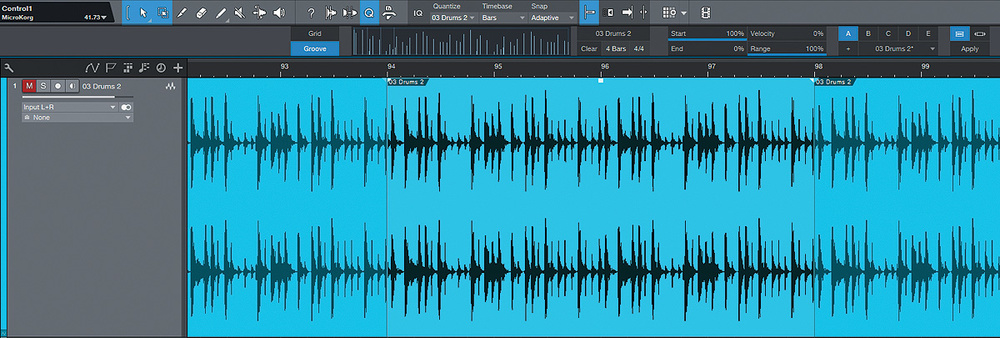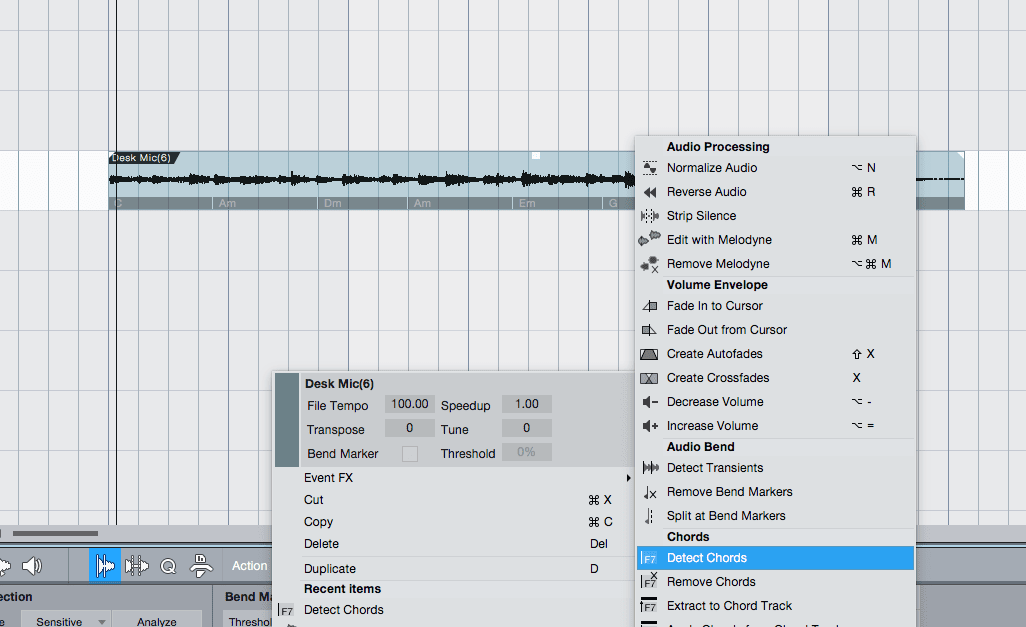
- Studio One 3 Pitch Bend Audio
- Studio One Audio Bend Track Timestretch Tool
- Presonus Studio One Audio Bend
- Studio One Audio Box
This tutorial will present a basic overview of how to pitch shift audio events in Studio One 4: Open a Studio One 4 song with at least one track that contains audio information: The picture above shows a Studio One 4 song with an audio track. Open the Inspector view of the track: 3. Enable the 'Event FX' tab and enlarge it vertically: 4. This tutorial will present a basic overview of how to pitch shift audio events in Studio One 4: Open a Studio One 4 song with at least one track that contains audio information: The picture above shows a Studio One 4 song with an audio track. Open the Inspector view of the track: 3. Enable the 'Event FX' tab and enlarge it vertically: 4. With Version 5, Studio One now supports recording in 64-bit floating-point WAV format, the recommended recording format for audio interfaces with 32-bit resolution. With this format option, the maximum recording and processing precision now reaches 64-bit/384 kHz, making Studio One Acoustic Drum Kits and Loops. How to use Audio Bend in Studio One Audio Bend is similar to Elastic Audio in Pro Tools or Audio Warp in Cubase: it's a way of bending, stretching and molding audio around in time without affecting the pitch. It is very useful for manipulating an out-of-time performance. As you edit in Studio One always use the most efficient approach for a particular case which for minor timing correction may not actually be Audio Bend or Melodyne ARA or quantize. The example below assumes that a random section of audio in an otherwise good performance Is a tiny bit out of time.
Audio Bend is similar to Elastic Audio in Pro Tools or Audio Warp in Cubase: it's a way of bending, stretching and molding audio around in time without affecting the pitch. It is very useful for manipulating an out-of-time performance or can be used creatively to achieve brand new sounds.
First, click the Audio Bend icon to show the AB toolbar.

Select an audio clip (by clicking on it), then click the eye symbol to show bend markers.

Studio One 3 Pitch Bend Audio
Then select the bend tool from the tool selection bar. You should have these three buttons selected:
Studio One Audio Bend Track Timestretch Tool
You can now use the bend tool to create and manipulate bend markers.
Once a bend marker is in place, it will not move unless you move it. It acts like an anchor for that point in the audio. Therefore, if you want to bend a small portion of audio while leaving the rest unaffected, create two bend markers to the left and right of where you would like to apply the bend. Then you can use AB to mold the audio inside the two bend markers safe in the knowledge that audio outside them won't be affected.

Depending on what you are applying AB to, you will want to use an appropriate timestretch algorithm to make sure the result distorts the audio as little as possible.
There are three algorithms you can select:
- Drums (Transient)- best for drums or other audio files containing numerous transients
- Sound (Polyphonic) – best for polyphonic audio such as guitar, piano, or whole songs
- Solo (Formant) – best for preserving the fidelity of a singers performance

- Studio One 3 Pitch Bend Audio
- Studio One Audio Bend Track Timestretch Tool
- Presonus Studio One Audio Bend
- Studio One Audio Box
This tutorial will present a basic overview of how to pitch shift audio events in Studio One 4: Open a Studio One 4 song with at least one track that contains audio information: The picture above shows a Studio One 4 song with an audio track. Open the Inspector view of the track: 3. Enable the 'Event FX' tab and enlarge it vertically: 4. This tutorial will present a basic overview of how to pitch shift audio events in Studio One 4: Open a Studio One 4 song with at least one track that contains audio information: The picture above shows a Studio One 4 song with an audio track. Open the Inspector view of the track: 3. Enable the 'Event FX' tab and enlarge it vertically: 4. With Version 5, Studio One now supports recording in 64-bit floating-point WAV format, the recommended recording format for audio interfaces with 32-bit resolution. With this format option, the maximum recording and processing precision now reaches 64-bit/384 kHz, making Studio One Acoustic Drum Kits and Loops. How to use Audio Bend in Studio One Audio Bend is similar to Elastic Audio in Pro Tools or Audio Warp in Cubase: it's a way of bending, stretching and molding audio around in time without affecting the pitch. It is very useful for manipulating an out-of-time performance. As you edit in Studio One always use the most efficient approach for a particular case which for minor timing correction may not actually be Audio Bend or Melodyne ARA or quantize. The example below assumes that a random section of audio in an otherwise good performance Is a tiny bit out of time.
Audio Bend is similar to Elastic Audio in Pro Tools or Audio Warp in Cubase: it's a way of bending, stretching and molding audio around in time without affecting the pitch. It is very useful for manipulating an out-of-time performance or can be used creatively to achieve brand new sounds.
First, click the Audio Bend icon to show the AB toolbar.
Select an audio clip (by clicking on it), then click the eye symbol to show bend markers.
Studio One 3 Pitch Bend Audio
Then select the bend tool from the tool selection bar. You should have these three buttons selected:
Studio One Audio Bend Track Timestretch Tool
You can now use the bend tool to create and manipulate bend markers.
Once a bend marker is in place, it will not move unless you move it. It acts like an anchor for that point in the audio. Therefore, if you want to bend a small portion of audio while leaving the rest unaffected, create two bend markers to the left and right of where you would like to apply the bend. Then you can use AB to mold the audio inside the two bend markers safe in the knowledge that audio outside them won't be affected.
Depending on what you are applying AB to, you will want to use an appropriate timestretch algorithm to make sure the result distorts the audio as little as possible.
There are three algorithms you can select:
- Drums (Transient)- best for drums or other audio files containing numerous transients
- Sound (Polyphonic) – best for polyphonic audio such as guitar, piano, or whole songs
- Solo (Formant) – best for preserving the fidelity of a singers performance
Presonus Studio One Audio Bend
If you need to, you can remove bend markers by selecting one and pressing delete. How to redo on ipad. You can also remove all bend markers at once by right-clicking the audio and clicking 'Audio' –> 'Remove Bend Markers'.
Studio One Audio Box
So go on..change the feel of that loop. Make it something new. Fit that vocal into the track. Make the track shine. Audio Bend will make it easy.

